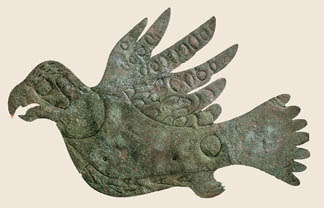Students at ASU have the opportunity to study the prehistory of the Eastern Woodlands with five archaeology and bioarchaeology faculty who have long-standing publications and ongoing research in the region. Our breadth spans Archaic, Woodland, Mississippian, and Contact Period peoples, including their ritual-economies, social-ceremonial-political organizations, religions, landscape evolution, biology, health, work, demography, and population structure. The culturally vibrant, mound-building Hopewell peoples of the Midwestern U.S. are a particularly strong focus of research of the faculty. 
Jane Buikstra researches the ceremonial-mortuary landscapes of Archaic, Hopewell, Late Woodland, and Mississippian people of the Midwestern U.S. Through her broad bioarchaeological approach, she addresses topics as diverse as the history of infectious disease to social memory and the built environment. Christopher Carr makes detailed reconstructions of the social, political, and ceremonial lives of Hopewell peoples in Ohio, including their forms of leadership, community organization, alliances, clan organization, gender relations, and ceremonies of various functions. He also is identifying Hopewell people’s religious beliefs and world views and their roles in the origin, operation, and demise of Hopewell sociopolitics and ceremonialism. Kate Spielmann's interests focus on ritual economies, with a particular emphasis on the development of craft specialization within northern Hopewellian earthwork communities. Christopher Stojanowski examines the Contact period transition in La Florida using biodistance and microevolutionary modeling. He is specifically interested in reconstructing changing patterns of social identity and colonial ethnogenesis from a biosocial perpsective. He is similarly interested in issues of social organization during the Early Archaic Period in Florida. Brenda Baker investigates the impact of European contact on Native American demography and health, particularly English and French contact in the Northeast and Spanish contact in the south. She also researches the distribution and temporal depth of treponemal infection in the Northeast. Together, these researchers use in their studies a broad range of media and provide students training in their analysis: mortuary remains, iconography, art, ceremonial paraphernalia and architecture, landscapes of sacred sites and places, and the human skeleton.
Supporting Faculty in Other Units: Kate Duncan (Art History), Ken Morrison (Religions)
© 2007, School of Human Evolution & Social Change, ASU (revised 10/1/2007)